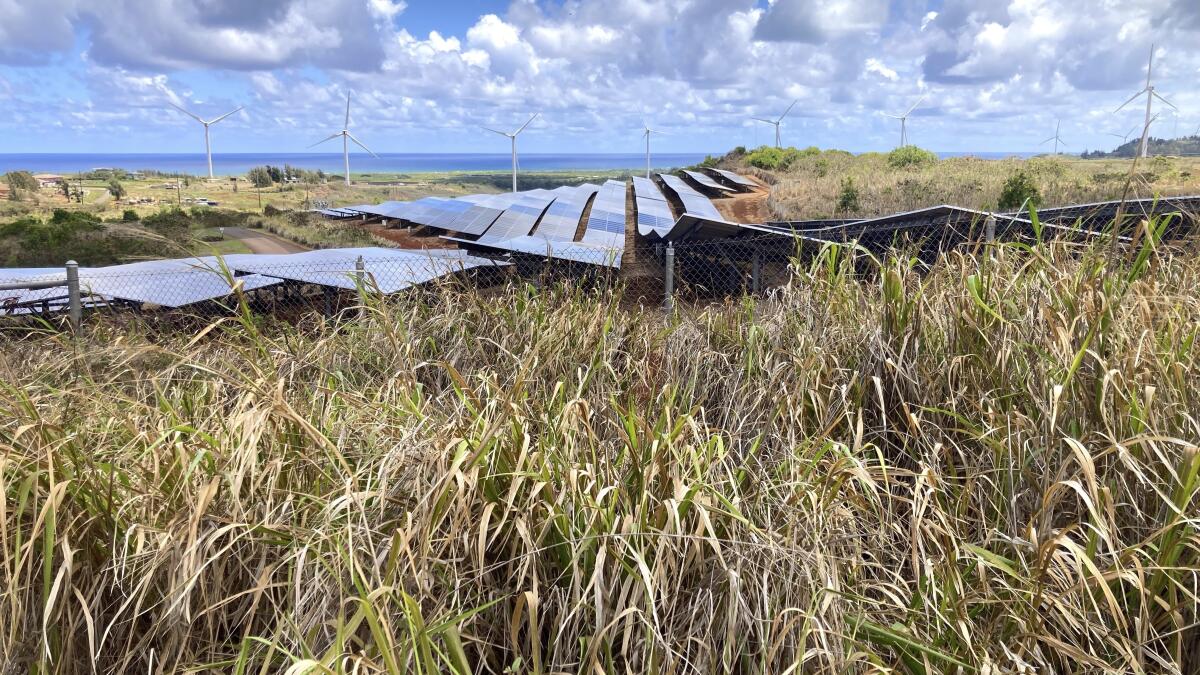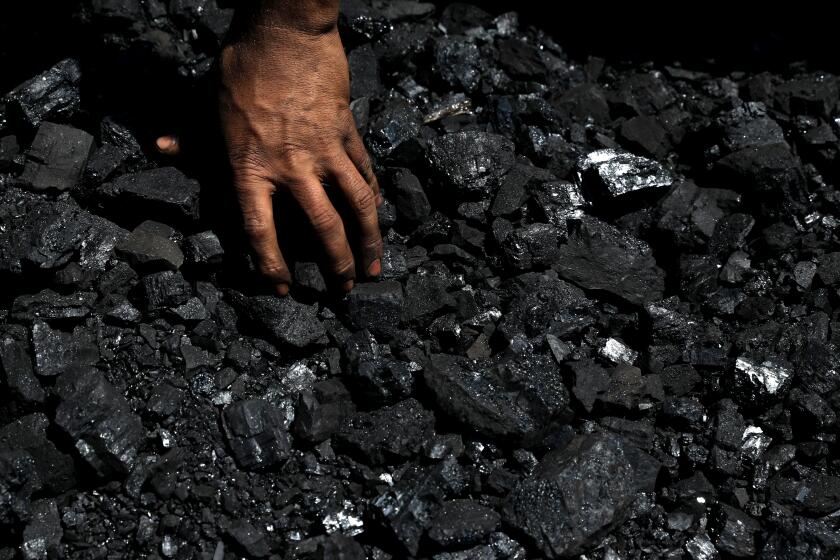Hawaii shuts down its last coal-fired power plant as ban takes effect

The last bits of ash and greenhouse gases from Hawaii’s only remaining coal-fired power plant slipped into the environment this week when the state’s dirtiest source of electricity burned its final pieces of fuel.
The last coal shipment arrived in the islands at the end of July, and the AES Corp. coal plant closed Thursday after 30 years in operation. The facility produced up to one-fifth of the electricity on Oahu — the most populous island in a state of nearly 1.5 million people.
“It really is about reducing greenhouse gases,” Gov. David Ige said. “And this coal facility is one of the largest emitters. Taking it offline means that we’ll stop the 1.5 million metric tons of greenhouse gases that were emitted annually.”
Like other Pacific islands, the Hawaiian chain has suffered the cascading effects of climate change. The state is experiencing the destruction of coral reefs from bleaching associated with increased ocean temperatures, rapid sea-level rise, more intense storms and drought that is increasing the state’s wildfire risk.
In 2020, Hawaii’s Legislature passed a law banning the use of coal for energy production at the start of 2023. Hawaii has mandated a complete transition to renewable energy by 2045, and was the first state to set such a goal.
But critics say that, although ending the state’s dirtiest source of energy is ultimately a good move, doing so now is not.
Renewable sources meant to replace coal energy are not yet online because of permitting delays, contract issues and pandemic-related supply chain problems. So the state will instead burn costlier oil, which is only slightly less polluting than coal.
There are now fewer than 10 plants without a planned retirement date.
“If you are a believer that climate change is going to end because we shut down this coal plant, this is a great day for you,” said Democratic state Sen. Glenn Wakai, chair of the Committee on Economic Development, Tourism and Technology. “But if you pay an electricity bill, this is a disastrous day for you.”
The end of coal and the additional cost of oil will translate to a 7% increase in electricity bills for consumers who already face the nation’s highest energy and living costs, officials say.
“What we’re doing ... is transitioning from the cheapest fossil fuel to the most expensive fossil fuel,” Wakai said. “And we’re going to be subjected to geopolitical issues on pricing for oil as well as access to oil. ”
The AES coal plant closure means that Hawaii joins 10 other states with no major coal-fired power facilities, according to data from Global Energy Monitor, a nonprofit organization advocating for a global transition to clean energy. Rhode Island and Vermont never had any coal-fired power plants.
In the run-up to the U.N. climate summit, host Britain announced that one of its goals was to consign coal to history. That’s easier said than done.
While Hawaii is the first state to fully implement a ban on coal, a few others previously passed laws. The 2015 law in Oregon, the first state to pass a ban, isn’t effective until 2035. Washington state’s 2020 coal ban starts in 2025. California, Maine and Texas are among the states that have restricted construction of new coal-fired plants.
The number of coal-burning units in the U.S. peaked in 2001 at about 1,100. More than half have stopped operating since then, with most switching to more cost-effective natural gas.
U.S. Energy Information Administration data show oil generated about two-thirds of Hawaii’s electricity in 2021. That makes Hawaii the most petroleum-dependent state, even as it tries to make a rapid transition to renewables.
Hawaii already gets about 40% of its power from sustainable sources, including wind, solar, hydroelectric and geothermal.
Stay tuned for more Repowering the West
Get our Boiling Point newsletter for the next installment in this series — and behind-the-scenes stories.
You may occasionally receive promotional content from the Los Angeles Times.
State Sen. Kurt Fevella, a Republican and the Senate minority leader, suggested that Hawaiian Electric Co. and other energy corporations should absorb the additional cost of shifting to renewables.
“The fact that Hawaii’s families are already doing what is necessary to reduce their energy uses while still paying the most in the nation for household electricity is unsustainable,” Fevella said. “While I believe utility companies like HECO can do more to reduce the energy burden passed on to Hawaii’s ratepayers, I also believe developers of renewable energy projects should also bear a greater portion of the transmission costs.”
AES Corp., the operator of Hawaii’s last coal plant, has transitioned to creating clean energy and is working on large solar farms across the state, including one in West Oahu that will replace some lost coal energy when completed next year.
“Renewables are getting cheaper by the day,” said Leonardo Moreno, president of AES’ clean energy division. “I envision a future where energy is very, very cheap, abundant and renewable.”
More to Read
Sign up for Essential California
The most important California stories and recommendations in your inbox every morning.
You may occasionally receive promotional content from the Los Angeles Times.








